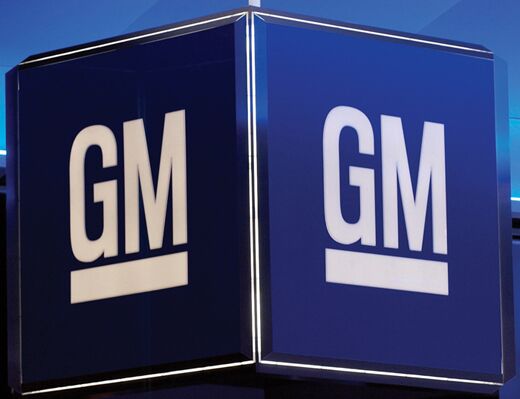
America: Home of “Junk”-Rated Companies
An incremental but dramatic shift in the credit worthiness of corporate America has occurred over the past two decades. Most companies now have junk-grade B credit ratings. The A category investment-grade ratings that dominated the U.S. corporate credit landscape just a couple of decades ago are becoming rarities.
American industrial corporations just set a new record according to credit rating agency Standard & Poor’s. Seventy-one percent of all U.S. industrial corporations tracked by the agency now have “junk” quality status (BB ranking or lower). As recently as 1980, fewer than a third fit that description.
Today, an amazing 42 percent of the approximately 2,000 monitored nonfinancial, non-utility corporations have credit ratings of B, one step deeper into junk status than BB, and the lowest credit rating that isn’t vulnerable to immediate default. In 1980, only 7 percent of companies had that dismal rating (Wall Street Journal, January 4).
Only six nonfinancial corporations currently qualify for the highest label of AAA—a sharp contrast to previous decades.
Yet, in the midst of the financially deteriorating U.S. corporate sector, investors seemingly disregard credit agency warnings and continue to dive head first into the junk-bond market. “Junk bonds used to be a bad word on Wall Street,” notes Joe Bencivenga, former bond analyst at Wall Street’s junk-bond house Drexel Burnham Lambert. But, lately they have gained “more respectability” (ibid.).
Investors just don’t seem to care about credit ratings like they used to. “People forget the bad times and remember only the most recent good times,” says Edward Altman, a finance professor at New York University. “I fear that’s the case right now” (ibid.).
Take Ford and General Motors, for example. Both companies have a junk-status credit rating of B, in large part due to their massive debts. As of July, Ford had a debt-to-equity ratio of approximately 10.1:1. In other words, the company has 10.1 times more debt than what the company’s assets are worth to shareholders (a ratio under 1:1 is considered healthy). In the event of a bankruptcy, shareholders would get nothing. GM has an even worse debt-to-equity ratio of approximately 12.4:1. Still, investors continue to overlook the historical significance of the dismal credit ratings and continue to buy the stock.
Ford and GM are not the only big-name companies that now have junk status. All across corporate America, many household brands are in much more precarious financial conditions than most realize, despite the economy’s relatively decent performance over the past few years. Technology sweethearts Lucent and Nortel are rated B and B-minus respectively. Sirius Satellite Radio is rated CCC and has yet to show a penny of profit—ever. Gap Inc., Eastman Kodak Co., Fresh Del Monte Produce Inc., Six Flags Inc., 24 Hour Fitness Worldwide Inc., Kinder Morgan, KB Homes, Playtex Products Inc., RadioShack Corp., Sears, Roebuck and Co., Toys “R” Us Inc., Tupperware Brands Corporation, and Xerox Corp. are all similarly rated junk quality. Yet investors continue to buy and trade tens of millions of shares of these corporations each day.
But investors should pay close attention to credit ratings. Historically, companies with junk credit ratings have been extremely vulnerable to bankruptcy. And because these companies have so much debt (which is usually a big reason why they have such a dismal credit rating in the first place), when they collapse, shareholders are typically left holding an empty bag.
Among one survey of approximately 120 B-rated companies that borrowed money through debt markets for the first time in 1996, just 6 percent have since paid off their debts. According to Standard & Poor’s, a full third of the corporations in this study defaulted or went into bankruptcy procedures; another third have been taken over by other companies.
For investors, the financial downgrading of corporate America could have important stock-market implications. Don’t be fooled by recent record stock market heights that may be obscuring the financial fragility of many companies. Over the long term, financial fundamentals most affect a business’s viability and therefore valuation and stock price. “If credit quality is decreasing, there will [eventually] be effects on stock prices—sometimes dramatically nasty ones,” warns Harry Koza, senior Canadian markets analyst at Thomson Financial.
When so many corporations have such poor credit ratings, it is a sign of underlying weakness in the sector and the economy as a whole. Mounting credit downgrades have historically preceded lower gross domestic product growth. Therefore, a rapidly rising number of credit downgrades, which is what seems to be occurring today, may be a harbinger of a recession.
“It bodes very bad if we have a hard landing,” said Martin Fridson, publisher of the Leverage World research service. “Given today’s ratings mix we could have default rates that would make even the ‘Great Debacle’ of 1989-1991 … pale by comparison.” He warns that even a softer landing could still cause default rates to jump to the high single digits.
Couple falling corporate credit ratings with a popping housing bubble and an inverted yield curve, and the case for a slowing economy grows ever stronger.
So what should the average investor do? It’s true that the general market is setting new highs, yet on average its component companies have deteriorating financial ratings. If you feel the urge to invest, Koza says, “Before you buy … check out the company’s credit rating. If their debt is rated junk, their equity will be even sweatier. Save your money—don’t buy it. And if you already own it, get out while there’s still a bid.” In the past, AAA-rated companies have proven much better at weathering economic downturns, so the old adage of buying the best quality you can afford seems to hold up.
Just remember, when buying shares in a company today, in many cases it may be more like buying something from a flea market: One man’s junk is often just that … junk.
